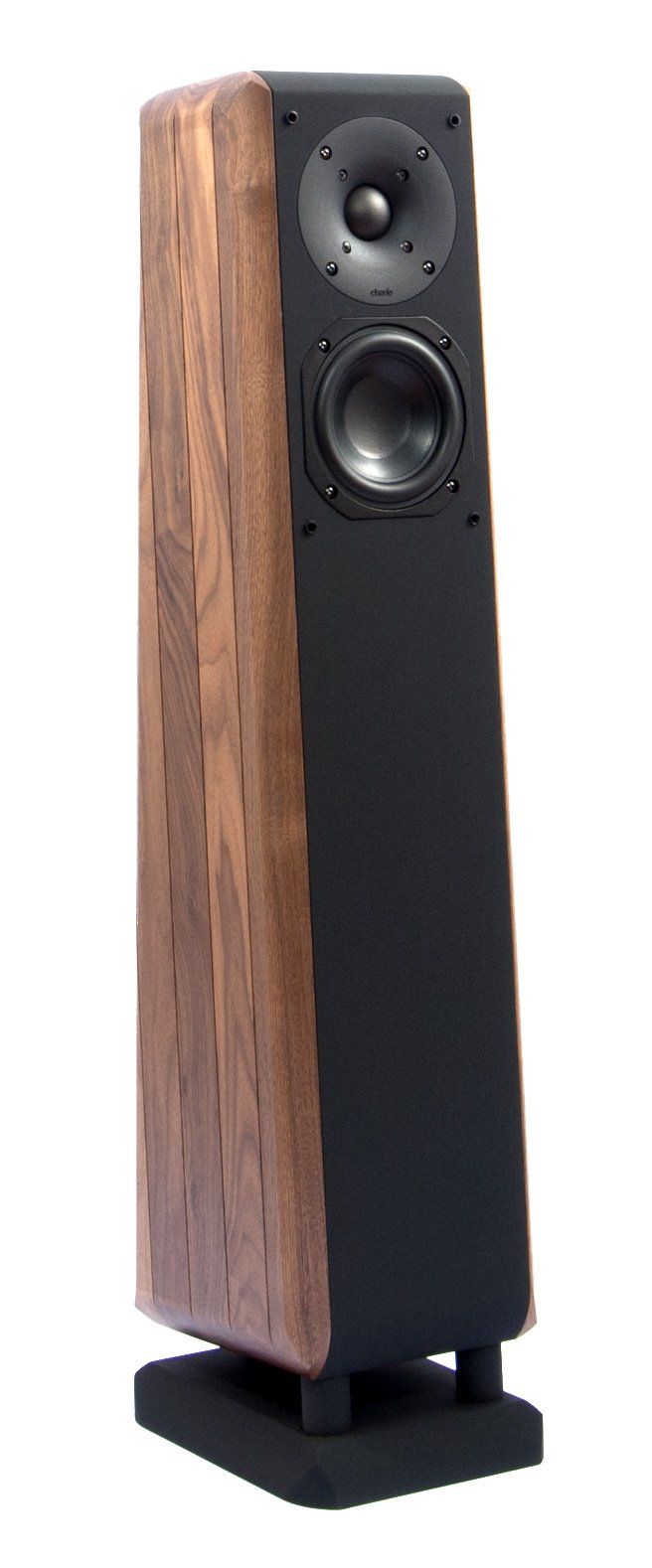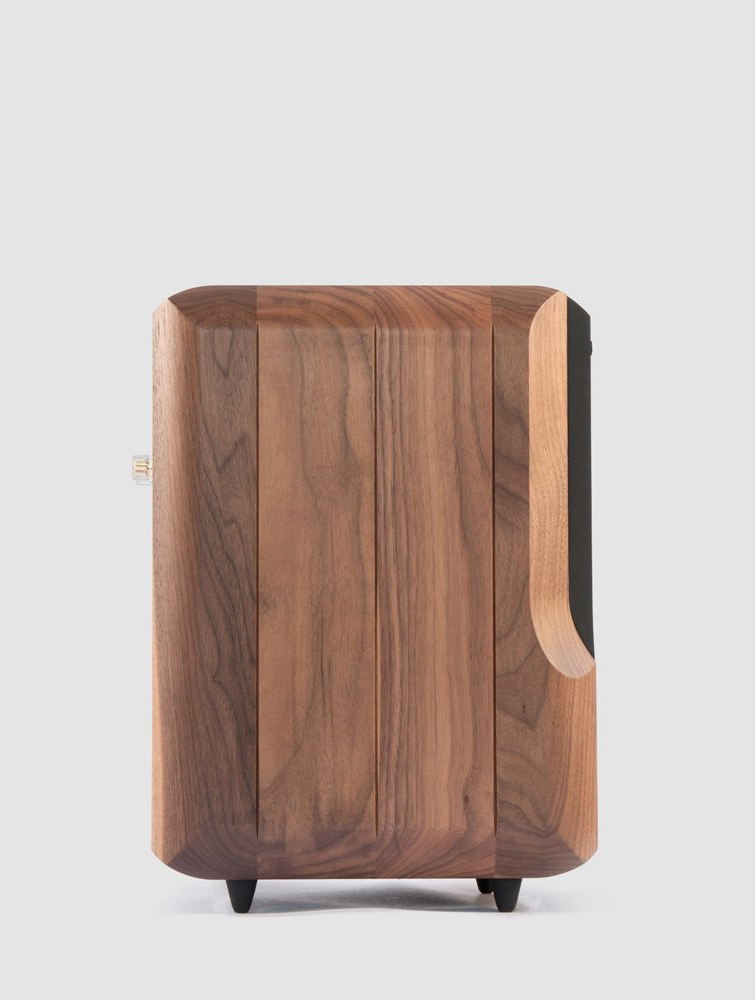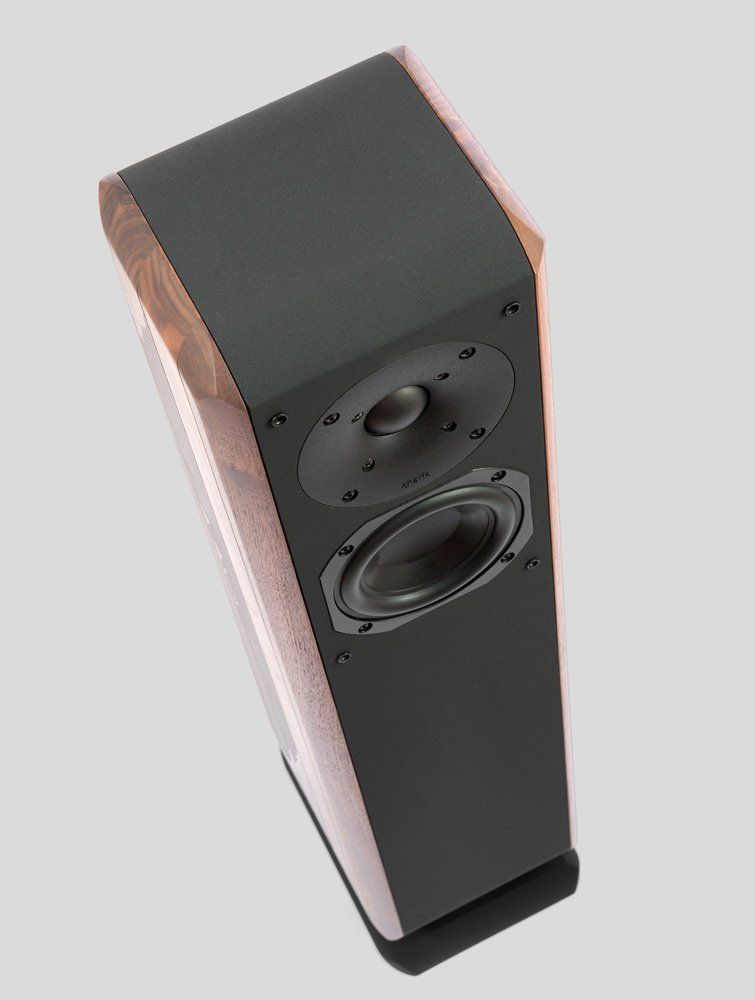CONSTELLATION SERIES
CYGNUS MK2
3 ways floar stand
Discover the Cygnus, a three-way floorstanding speaker designed for those who seek power, precision, and deep sound. Equipped with a T38 tweeter and a 130mm woofer on the front, paired with a second 130mm woofer positioned at the bottom, the Cygnus extends frequency response down to 50 Hz, delivering powerful and controlled bass.
The innovative woofer arrangement reduces the load on the front driver, ensuring superior dynamics, crystal-clear detail, and an immersive listening experience without fatigue. With a 60° dispersion angle for the tweeter and a 360° omnidirectional dispersion for the woofer, the Cygnus fills any room with rich, balanced, and enveloping sound.
Perfect for music lovers looking to take their audio quality to the next level. a reduction in listening fatigue.

ACUSTIC REFRACTION.
SHAPING SUOND NATURALLY.
Acoustic refraction exploits the physical principle by which sound waves change direction when they encounter surfaces with different densities or orientations. In acoustics, this allows for controlled sound dispersion in space, enhancing the perception of a three-dimensional soundstage. When carefully applied—through cabinet shapes and materials designed specifically for this purpose—refraction results in a more immersive, natural, and coherent sound, reducing focus-related artifacts and improving performance even in acoustically challenging environments.
MAXIMUM EFFECIENCY AND BASS CONTROL
near resonance surface technology delivers deeper, cleaner bass with higter efficiency and lower distortion.
The NRS (Near Resonance Surface) principle is based on the interaction between the woofer and the supporting surface, combined with an optimized mechanical design of the driver, to maximize efficiency in low-frequency reproduction. This system takes advantage of the fact that when a speaker is placed very close to a rigid surface (such as a wall or the floor), energy losses due to backward acoustic radiation are reduced. This configuration enhances sound pressure in the bass range thanks to the increased acoustic loading provided by the nearby surface.
From a physical standpoint, the NRS principle allows the woofer to double its efficiency by halving the diaphragm excursion required to produce a given sound pressure level. In a linear system, acoustic power is proportional to the square of the diaphragm’s displacement, while distortion tends to increase with excursion. By reducing displacement while maintaining sound pressure, a cleaner and more controlled sound is achieved, with lower harmonic distortion.
In the Cygnus model, the NRS system has been precisely integrated to operate within the 50 to 170 Hz frequency range. In this critical band—essential for conveying the body and depth of sound—the system achieves a 3 dB gain in efficiency (equivalent to doubling the perceived sound pressure) at the same level of distortion. The result is deeper, more dynamic, and better-controlled bass reproduction without sacrificing sound clarity.







